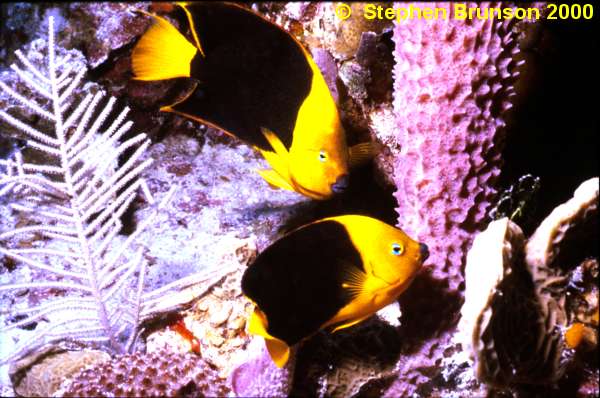
Print Number - AF010
Limited Edition signed color photography for sale by Stephen Brunson
Rock Beauty Angelfish, Holacanthus tricolor, Statistics:
Size: 15 - 17 inches
Lifespan: Approximately 15 years.
Breeding: The Queen and Blue Angelfishes commonly hybridize, producing offspring mixed in appearance.
Habitat: Shallow coral reefs and walls in depths of 100 ft. or less.
Diet: Sponges, algae, and small invertebrates, such as bryozoans, zoantharians, gorgonians and tunicates
Distribution: From Florida to the north coast of South America, including Bermuda and the Gulf of Mexico
Habit: Usually Peaceful
Notice the Azure Vase Coral which the rock beauties use for protection from predators. The azure vase is one of the true corals. True corals secrete calcium carbonate from the bottom half of the stalk of the individual animal, or polyp, forming skeletal cups to which the polyps are anchored and into which they withdraw for protection. In the flattened oral disc at the top of the stalk is an opening, edged with feathery tentacles and cilia, that is both mouth and anus. At night the tentacles extend from the cup, seize animal plankton that wash against them, and carry the food to the mouth. Stinging cells, or nematocysts, on the tentacles can also paralyze prey.
BrunsonImages@att.net
| 

















